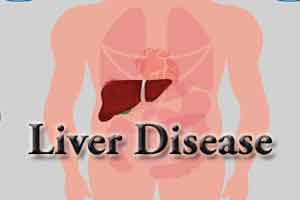- Home
- Editorial
- News
- Practice Guidelines
- Anesthesiology Guidelines
- Cancer Guidelines
- Cardiac Sciences Guidelines
- Critical Care Guidelines
- Dentistry Guidelines
- Dermatology Guidelines
- Diabetes and Endo Guidelines
- Diagnostics Guidelines
- ENT Guidelines
- Featured Practice Guidelines
- Gastroenterology Guidelines
- Geriatrics Guidelines
- Medicine Guidelines
- Nephrology Guidelines
- Neurosciences Guidelines
- Obs and Gynae Guidelines
- Ophthalmology Guidelines
- Orthopaedics Guidelines
- Paediatrics Guidelines
- Psychiatry Guidelines
- Pulmonology Guidelines
- Radiology Guidelines
- Surgery Guidelines
- Urology Guidelines
New targets for drugs to treat fatty liver disease and liver cancer

There may no silver bullet for treating liver cancer or fatty liver disease, but knowing the right targets will help science develop the most effective treatments. Researchers in Sweden have just identified a number of drug targets that can be used in the development of new efficient treatment strategies with minimum side effects.
Researchers from KTH Royal Institute of Technology’s Science for Life Laboratory (SciLifeLab) research center and Gothenburg University employed the biological networks generated for 46 major human tissues in order to identify the liver-specific gene targets.
The results were published in Molecular Systems Biology, an EMBO Press Journal.
The researchers mapped the metabolic changes caused by accumulated fat in liver cells, and combined this data with an analysis of biological networks of liver and other human tissues. Doing so enabled them to identify the liver-specific drug targets whose inhibition will not cause any side effect to other human tissues, says lead author Adil Mardinoglu, a SciLifeLab fellow, who had earlier established a connection between NAFLD and HCC and increased fat synthesis in liver tissue.
Hepatic steatosis is defined as the excessive accumulation of fat in the liver and it is the key characteristic of non-alcoholic fatty liver disease (NAFLD). It is one of the most common chronic liver problems in the world and affects almost 30 percent of the adult population. The disease is the consequence of obesity, diabetes, or excessive alcohol intake and can lead to non-alcoholic steatohepatitis (NASH), cirrhosis, liver cancer and even hepatic failure. There are few treatments, even though the need is urgent.
Mardinoglu says the team’s network modeling approach, which relied on data from the Sweden-based Human Protein Atlas project and The Genotype-Tissue Expression (GTEx) project consortia, can be used in the identification of drug targets and eventually in the development of efficient strategies for treating a number of chronic liver diseases.
To validate their computer modeling predictions, researchers performed experiments in human cancer cell lines, mouse liver samples and primary human hepatocytes. They validated their predictions by demonstrating functional relationships between these liver gene, and showed that their inhibition decreases cell growth and liver fat content, Mardinoglu says.
The researchers identified liver-specific genes linked to NAFLD pathogenesis, such as pyruvate kinase liver and red blood cell, (PKLR), or to HCC pathogenesis, such as PKLR, patatin-like phospholipase domain containing 3 (PNPLA3) and proprotein convertase subtilisin/kexin type 9 (PCSK9), all of which are potential targets for drug development.
Mathias Uhlen, director of the Human Protein Atlas project and co-author of the paper, says: “I am extremely pleased that the resource created through the Human Protein Atlas effort has been used in the analysis of clinical data obtained from liver disease patients and that this analysis has led to the identification of liver-specific drug targets that can be used for treatment of this clinically important patient group.”

Disclaimer: This site is primarily intended for healthcare professionals. Any content/information on this website does not replace the advice of medical and/or health professionals and should not be construed as medical/diagnostic advice/endorsement or prescription. Use of this site is subject to our terms of use, privacy policy, advertisement policy. © 2020 Minerva Medical Treatment Pvt Ltd